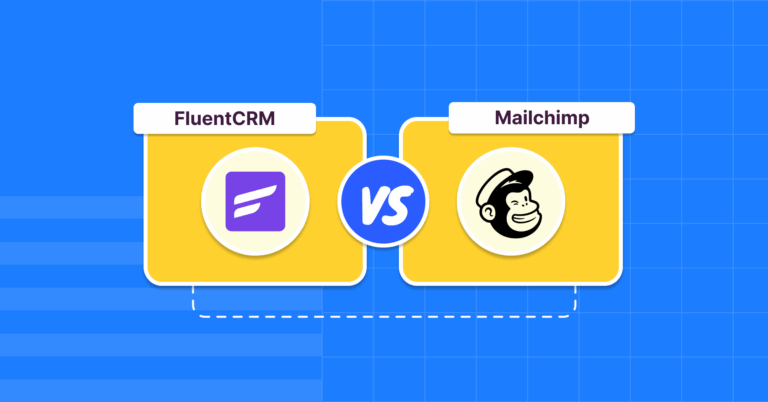

We will never spam you. We will only send you product updates and tips.
Last few days, I have been studying a core marketing parameter which allows me to know about lots of fundamental issues concerning online marketing.
The issue I have been particularly dealing with is Vanity Metrics vs Actionable Metrics. I’ll be honest, initially I was in the midst of utter confusion. But as I keep analyzing, it’s making a lot more sense to me.
Before digging into…
Metrics and numbers are important in all kinds of marketing activity. But what’s equally true is that not all of them are equally significant. As I read an article I paused to ask myself what was the actual value of some of the metrics that I was looking for.
Over the next couple of days, the thought kept nudging my mind. Hence, I started to read more on the subject. Extensive research on the subject finally brought me clarity. It was at this point I decided to share my understanding with others, hoping that it might help them to find a better solution in their marketing campaigns.
Most of us think that information or data is always a great thing, right?
The more you have information about any specific thing, the more you can asses that specific thing precisely. More information means a higher possibility of making a fruitful decision for the business. But not all information brings potential and the quality of your information matters greatly.
What you have read till now, though generally seem sensible, will not be applicable or legit under all conditions. All the information you have collected is not beneficial for your business. Some of those data might even be worse than worthless as it bears a wrong impression of your business. Only some of the data are helpful for backing a solid decision and get your business grow faster.
To understand any kind of metrics, you need to have enough information about the specific subject. An effective way of knowing more about your business is metric analysis. Metrics are calculations or estimations that determine how your business is performing in particular fields. But not all metrics bear the same significance as they have distinguished quality in particular.
In marketing, we see there are two most popular metrics: ACTION METRICS and VANITY METRICS. These two types of metrics have different nature and should not be treated in the same way to derive any sort of information on your business.
Vanity Metrics vs Actionable Metrics
To clear things up, I am going to explain these two different metrics distinctly. Let’s start with vanity metrics.
1. Vanity metrics
As the name implies, Vanity Metrics are things that you can measure, but not necessarily to get a clear picture of your firm. They are simply manipulated as they don’t bear any significant relationship with the number that articulates to business gain or progress.
It’s a report or a set of information that will boost your sense of satisfaction rather than some actual business outcome. Initially, it looks great on papers but ultimately, it will not support you to create a growing marketing strategy.
Nowadays, knowingly or not, most of the marketers are focusing on the various growing vanity metrics. Consequently, at the end of the day, they are not getting the expected sales and the ultimate revenue.
Typically it comprises fundamental measures like page views, total download, registered users and social media likes etc. On the other hand, they don’t relate to the number of active users, cost of acquiring new customers, user engagements, profits, and revenues etc.
It is highly important for business owners to properly instrument the data what they have already tracked in order to manage the true strength of their respective business. In this case, if they only count vanity metrics, they might get a false sense of success.
An android app could have millions of download but could have only hundreds thousand active users. As you can see, only the number of download can’t provide a healthy amount of data, neither can it be the sound source of a healthy decision.
The vanity metrics are not completely worthless though. Just keep in mind that you shouldn’t be tricked by them. There are some methods of reverting to real numbers from the vanity metrics. You can turn vanity metrics into actionable metrics using different ways.
Let’s say 30 percent of total downloads or registered users are active twice a month, 15 percent are active once a day, and 10 percent for the regular users will be the maximum number of parallel users. These are some of the patterns a company can assess.
Vanity metrics can be used in marketing and for initial branding in some cases. By showing total viewers, total likes, and total downloads, you can have a proper initial image of a particular thing. But for taking a well thought out decision, it wouldn’t wise to consider vanity metrics as a prime factor.
2. Actionable metrics
Actionable metrics are such metrics that empower business owners to make decisions and inspire to take action-oriented behavior. It ties definite and repeatable actions to respected results. Actionable metrics measure the volume of human effort versus use case performed.
In general, actionable metrics imply such metrics that help to take any action or make a decision. It gives a total view of a business process that ultimately helps to tweak the process to increase revenue. Actionable metrics simply show you a comprehensive way of gaining profitability.
It also indicates a gateway for getting customers. These metrics show you what kind of people are coming to you and what drove them to your business. All these types of data help you to increase conversion and make a good decision even if it’s out of the box.
There are certain factors that can determine your standard of measurement regarding actionable metrics. Let me break things down a little for you.
i. Content measurement
Quality content could be one of the best reasons for being a metrics actionable. Moreover, the amount of fresh, quality content on a page can play a vital role in making your metrics more actionable. You just have to look at it the right way.
You may contain many pages that are fragile or duplicate content on your website. Therefore, you are risking your entire site to suffer a fall in the rank of Google Panda. There are some ways to asses your site like AB testing, using the custom variable to your site.
ii. Revenue
Revenue Tracking can be a great metric as it is the prime concern of your business. The revenue can be measured if you consider the two most important factors. One is that you have to customize your analytics with goals, and another is the customer value. You have to track where the revenue comes from, and who pays you.
iii. Visitors who only view your product page
The page view is the first attempt at selling a product, making very important to take into consideration. There are some of the e-commerce sites that think that visitors will visit their site automatically through searching out of their own interests.
But that’s far from reality! Time has changed and the marketing policy has shifted with it. There can’t be any obstacle for a visitor to get into your product pages. It can be caused by poor navigation design, bad internal site search, obscure category names, etc.
In addition to that, many websites, especially e-commerce sites, contain blog section or videos section. Features like these can hijack visitor’s interest. They can easily get distracted by one of those sections and ultimately end up leaving without ever seeing the product page.
iv. Analyzing leads and customers
As you track your revenue, it’s also crucial that you track the people who bring it, and where these people come from. There are a plethora of platforms in the digital arena like social, organic search, paid traffic, referrals, and so on. If you only concentrate on visitor’s data in your leads and customers, you will be overlooking a lot of vital information as these are a small portion of your gross visitors data.
iv. Loading speed
A page takes more than a few seconds to load and you’re already bored. That’s alright, we’ve all been there. The page loading speed could be a cause of actionable metrics as Google is mostly obsessed with speed. There are lots of tools to measure the loading speed of a certain page. A faster website makes better experiences for everyone.
Google has confirmed site speed as a part of the algorithm. Moreover, you should be concerned about the speed because it is integral to retaining customer’s attention. If a visitor gets bored of waiting for the page to load, they will most probably not come to your page again.
v. Analyze your funnel
The funnel is the main gateway of conversion, so it should be under control. It’s better to track every stage of the funnel and put your best effort into it to maximize the ultimate conversion rate. Always look up where disruptions occur in the funnel and the troubles that people are facing in the process.
vi. Conversion rate
The conversion rate is one of the best factors for evaluating actionable metrics. First of all, you should track site-wise conversion rates for tracking a total conversion, then you can go deeper for having some solid metrics. Conversion rates are also used in traffic sources and specific marketing campaigns. You should observe your conversion at different steps of your funnel so that you can see where to take action.
Conclusion
Before finishing up, I would like to suggest you do not waste your valuable time concentrating on vanity metrics as it is more like admiring yourself in front of a curved mirror. Instead, I would highly recommend you to focus on the actionable metrics to get the ultimate conversion for your business.
I hope this article helps you understand the Vanity Metrics vs Actionable Metrics for your marketing campaign. If you want to share anything regarding the article, please let me know by leaving a comment below.





Leave a Reply
You must be logged in to post a comment.